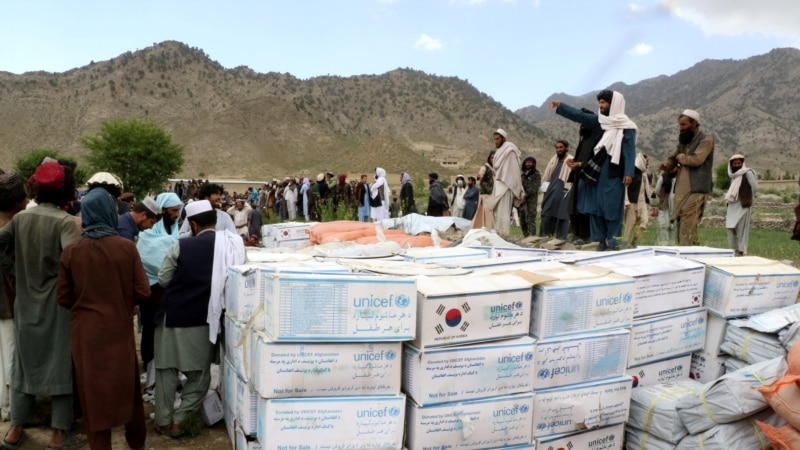
The United Nations said Monday that 6 million Afghans are on the brink of famine, with winter around the corner and humanitarian appeals dramatically underfunded.
“Afghanistan’s crisis is a humanitarian crisis. It’s an economic crisis. It’s a climate crisis. It’s a hunger crisis. It’s a financial crisis,” U.N. humanitarian chief Martin Griffiths told the U.N. Security Council. “But it’s not a hopeless crisis.”
But he painted a bleak picture.
Griffiths said 24 million people need some kind of humanitarian assistance, and almost 19 million of them face acute hunger. An estimated 3 million children are acutely malnourished.
“They include over 1 million children estimated to be suffering from the most severe, life-threatening form of malnutrition,” he said. “Without specialized treatment, they could die.”
The U.N. launched its largest appeal ever last year, seeking $4.4 billion to assist Afghans, but faces a shortfall of $3.14 billion as winter approaches. Griffiths said $614 million is urgently needed to repair shelters and provide warm clothes and blankets, as well as another $154 million to pre-position supplies in remote areas that are hard to reach in winter.
“But we are up against time,” he said. “These activities must be implemented in the next three months.”
In the past year, Griffiths said, humanitarians have reached nearly 23 million people with assistance.
“But let me be clear. Humanitarian aid will never be able to replace the provision of systemwide services to 40 million people across the country,” the aid chief said.
He called on the international community to stand by the Afghan people and for the de facto Taliban authorities to do their part.
Since the Taliban seized power just over one year ago, the suspension of most international aid, which had propped up the previous government, has contributed to a breakdown in many basic services, including electricity, health services and education. Inflation is rampant, and the price of ordinary goods is beyond the reach of most Afghans.
On top of the political crisis, there has been an earthquake and severe floods. Afghanistan is also reeling from the effects of two severe droughts, in 2021 and 2018. After dropping significantly, civilian casualties have begun to rise again.
“The last three weeks have seen the highest number of civilian casualties in a one-month period since 15 August 2021, in a series of improvised explosive device attacks in Kabul, most claimed by ISIL-K [Islamic State Khorasan],” said Markus Potzel, the acting head of the U.N. Assistance Mission in Afghanistan.
Russia, US trade criticism
Russia asked for Monday’s meeting and used the opportunity to criticize the U.S. and its NATO partners for their 20-year-long war on terrorism in Afghanistan.
“Ultimately the people of Afghanistan, who as our American colleagues repeatedly told us they were there to protect, were abandoned to their fate,” Ambassador Vassily Nebenzia said. “They were left face-to-face with ruin, poverty, terrorism, hunger and other challenges.”
U.S. Ambassador Linda Thomas-Greenfield said Washington and its allies have continued to assist the Afghan people, providing humanitarian assistance and other help.
“What are you doing to help other than rehash the past and criticize others?” she asked her Russian counterpart. “If you are concerned that Afghan women and children are dying, how are you helping them?”
She noted that Washington has provided more than $775 million in humanitarian assistance to the Afghan people in just the past year.
“Russia has contributed only $2 million to the U.N. Afghanistan Humanitarian Response Plan to date,” she said. “And Russia has contributed nothing — not one cent — nothing this year.” She suggested that if Moscow wanted to talk about how Afghanistan needs help, that is fine, “but we humbly suggest you put your money where your mouth is.”
